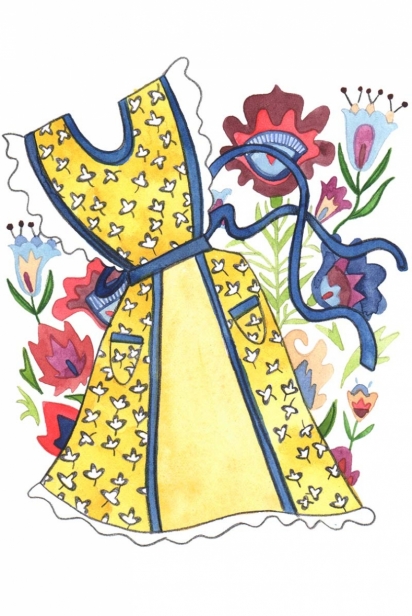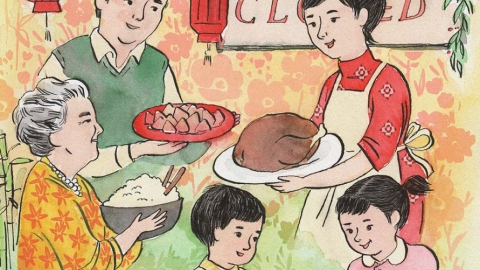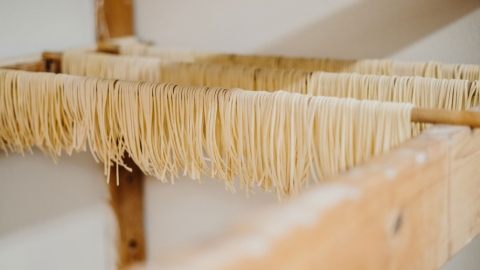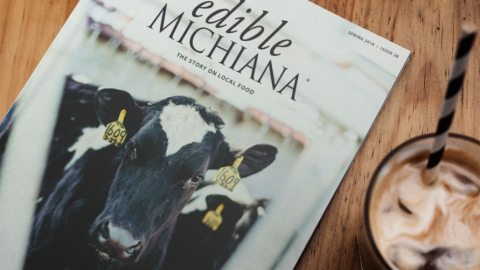Grandma’s Czech recipes reflect old country traditions
The tongue is a time traveler. A crunch of toasted caraway seed, the pucker of sauerkraut, the plushly buttered cushion of a potato dumpling … these transport me to harvest gold–tinted childhood suppers in Denver, and to the tiled kitchens of my grandmother and her mother, and all the way back to the old country of Czechoslovakia.
I roll in my mouth the sweet roundness of the phrase “mother tongue.” The Czech words I remember from childhood come straight from those kitchens: knedlíky and zelí (dumplings and sauerkraut), zmrzlina (ice cream), čokoláda (sound it out and smack your lips). My father taught me those chewy words, which seeded kitchen conversations in his own childhood in a Bohemian neighborhood in Chicago, in a brick row house with relatives stacked two floors up, like a Slovakian punch torte with trim for icing. The one phrase my father taught me in Czech is a pickup line: “Hezká holka, dej mi pusu?” If I ever make it to Prague, I’ll be able to order a delicious meal, then ask a pretty girl to give me a kiss.
My paternal grandmother, Eloise Lidinsky, is the wellspring of these tongue-tingling memories. I framed in silver a sepia photo of her with her boyfriend at the beach in New Buffalo, MI, on what must have been a day trip out of the sweltering city. Her ringleted bob crowns an eye-popping outfit—a revealing knitted swimsuit with “Eloise” embroidered in script across the topography of her bosom. Her smile is sweetly confident and her arm is slung around her well-muscled boyfriend with a floppy pompadour and raffish grin. The two lean into one another, oblivious of the bowler-hatted gentleman on the sand dune behind them. Their sexy familiarity, two years before their wedding, suggests that the late-afternoon sun wasn’t the only hot item that summer in 1927.
By the time I knew my grandma, in the 1970s, she was a tiny but well-upholstered dynamo in floral print dresses, with hands no bigger than a child’s, cuffed in copper to ward off arthritis. But oh, what muscular magic those hands could conjure in the kitchen. The family had relocated to Denver in 1946 to escape South Chicago’s asthma-aggravating air. They carried heritage flavors with them, of course, and found good gastronomic company in the many Bohemian immigrants who settled in Colorado and Nebraska. There were Czech groceries and a Sons of Czechoslovakia group that kept alive the language and culture.
I remember extended family suppers in the close air of my grandmother’s stucco bungalow, the card table–extended banquet buzzing with hungry cousins, aunts and uncles. My grandfather—the hot boyfriend of the photo—died before I was born, so my grandma presided like a compact queen over the steaming platters of dumplings and duck or pork chops. She made sure all her daughters-in-law had recipe cards “from Mother Lid” in her ballpoint cursive, revealing her sauerkraut secret of slow-cooking bacon in onions and pinching in some flour and a shower of caraway seeds to add layers of fat, flavor and texture to the pickled cabbage.
My mom, despite her Scots-English roots, mastered Czech stuffed cabbages, and raised my sister and me to appreciate the varieties of steamed or boiled dumplings, to sponge up gravy for a glorious gush of flavor. Only occasionally did I envy the white bread PB&Js of my classmates when we squeaked open our metal lunch boxes. Mostly, I felt smugly sophisticated with my wax paper–wrapped oddities: the sour tang of seeded rye bread, the bite of pickled kraut and the moody flavors from the immigrants’ pantry, like koláče dolloped with poppy seed paste.
I spent a delicious afternoon this summer poring through family cookbooks, tracing my grandmother’s pen strokes as she concedes that boxed Potato Buds, a mid-century innovation, are just fine in dumpling dough that shapes well into a sausage-size tube: “half-inch slices, boiled until they float. Freezes well.” One of the cookbooks, a women’s fundraiser for St. Francis Church, boasts 31 dumpling recipes, stirred up from farina, bread cubes, mashed potatoes, even Cream of Wheat. This starchy bounty overshadows the 25 vegetable dishes, three of which are variations of sauerkraut and 17 that begin with sautéing bacon. This is thrifty food for hard workers who made the most of humble ingredients grown out back. Many recipes conclude with a firm maternal declaration: “Dobré ochutnávky!" (good-tasting). Translation: Eat what’s on your plate.
My own kitchen knife slices finely between preserving and adapting, a skill I attribute to my sturdy forebears. As a longtime vegetarian, I swap out the bacon or tinned fat in family recipes for chopped mushrooms caramelized with onions. Cabbage rolls can be stuffed with bulgur and eggplant for texture and heft. Fresh bread crumbs can be sautéed in olive oil with salt and smoked paprika for crunch, fat and salt—the umami magic that vegetarians can miss.
As we tip toward the winter holidays, I think of my grandmother’s too warm and too small final kitchen, in a downtown Denver retirement high-rise filled with Japanese immigrants. While the hallways swam with aromas of fish and tsukemono (Japanese-style pickled cabbage), her apartment kitchen remained a portal to the Czech past. My sister and cousins and I patted the silky raised dough for koláče into dimpled rounds, and she spooned in the filling, glistening like jewels. We children added the garnish, always the same: three golden sultanas on the dry cottage cheese, three sliced almonds on the prune and apricot.
When the timer rang, we stood together, ages spanning the 20th century, cupping our hands around warm pastries, each bite sweeter than a kiss, as expansive as the stories of immigration, each melting morsel a memory on the tongue.













